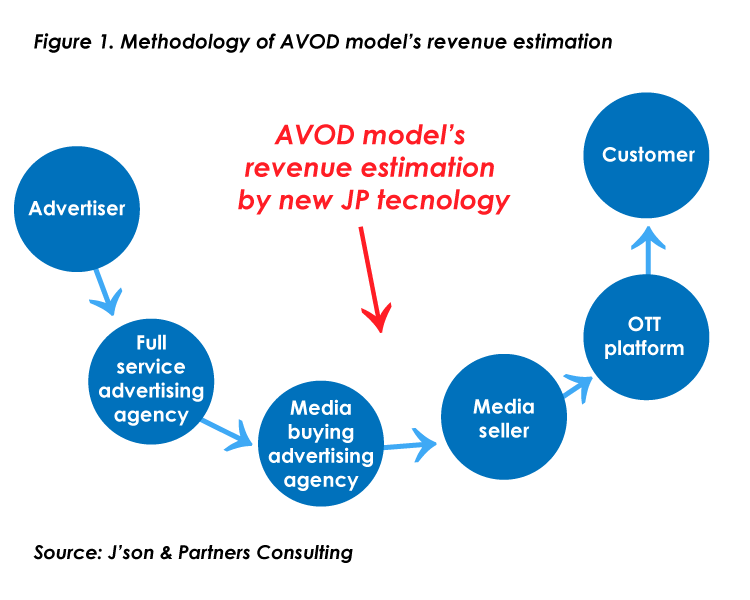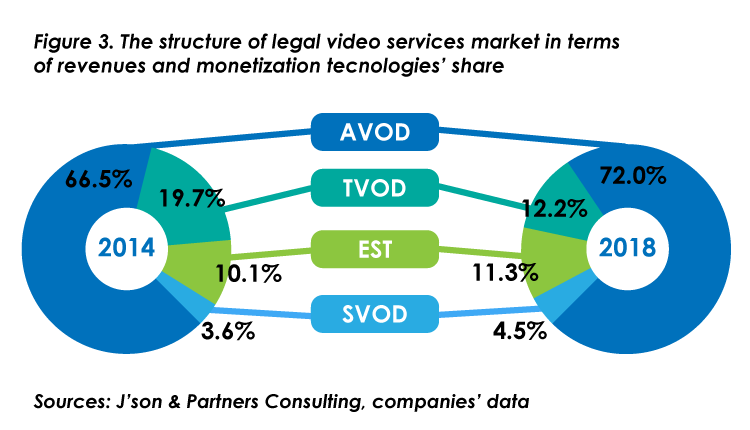The analysts of J’son & Partners Consulting published the results of their research on last years’ operation of Russian services, providing a legal access to video content, as well as forecasted the opportunities for their further development up to 2018.
The researchers paid a particular attention to the present, as well as possible situation with video services, the analysis of business operations, operators’ platforms and strategies. It’s worth noting that as far as from 2014 the AVOD income accounts (Advertising Video on Demand – providing video files upon request with advertising) have been settled in view of deductions in favour of Russian seller agencies.
Last year the profit of legal video content services amounted RUR 7.4 billion. In 2018, as analysts suggest, the earnings will increase up to almost RUR 13 billion. The average annual growth rate of profits will reach 14.9% over these years.
The advertising model of AVOD service accounted for 66.5% of profit in the past year. This model will retain its leading position until 2018 by reaching 72%.
But in spite of such a high increase in income from EST (Electronic Sell-Through – paid access to content), SVOD (Subscription Video on Demand – access to video through a subscription) and the advance market growth in general, by 2018 the total amount of revenue from paid models of video services will decline, as the revenue from TVOD (Transactional Video on Demand – paid video with viewing time limits) will drop this year. The analysts call the main reason for such a situation the stroke of Tricolor TV: the operator activated the service of Kinozaly (Cinemas) within its basic package Edinyi (Unified) in March of present year, without changing the price of the latter.




















